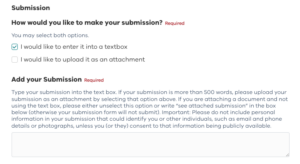What to include in your submission
Begin by introducing yourself and why you care about this issue. If you live in or nearby Geelong, regularly visit Corio Bay, or have some other connection to the area, you should mention that.
Keep the language polite and reasonable. You don’t have to be an expert, just a concerned citizen. The following might be useful information.
General community concerns
- Safety: Corio Bay is not an appropriate location for a gas terminal. It is too close to 30,000 residents, recreational & commercial Bay users. The shipping channel is not wide enough to accommodate large LNG tankers if something goes wrong, and Viva Energy hasn’t modelled what would happen if there is an incident or spill. Viva is also yet to release a navigational and safety risk assessment.
- Recreation: Viva Energy’s proposal would double the area of the recreational boating exclusion zone around the refinery jetty, removing access to fishing grounds.
- Visual impact: LNG ships are 300 metres long and 49 metres high (for locals, that’s longer than Cunningham Pier, and taller than the Giant Sky Wheel near Eastern Beach).
- Cultural heritage: Impacts to Aboriginal cultural heritage are still unknown as Viva has not provided the Cultural Values Assessment as directed by the Minister.
- Climate change: Gas is a polluting fossil fuel. The Viva Energy gas terminal would import enormous amounts of it, responsible for 600,000 tonnes of carbon pollution per year. Locking in high gas use for decades is inconsistent with Victoria’s climate targets. A smarter alternative is government action to help people switch to efficient electric appliances – like reverse cycle air con for heating – instead of expensive imported gas.
- Marine environment: Corio Bay is a unique marine environment, different from the broader Port Phillip Bay, and home to an internationally significant Ramsar wetland close to the proposed location for this gas terminal. Further details on marine environment concerns are below.
Specific scientific concerns
Dredging could be much larger than the estimated amount. A typical LNG tanker ship is 300 metres long and 43 metres wide. The bottom extends 12 metres underwater. The Geelong Channel is 11.9 metres deep with tide and 10.6 metres deep without tide. The channel is not deep enough for a ‘typical’ LNG ship and will need to be dredged. Rival LNG company Vopak rejected Corio Bay as a location for a gas import terminal due to concerns about significant dredging and marine impacts. We consider that the monitoring dredging impacts in Viva’s proposal is not consistent with the Victorian Dredging Guidelines.
Insufficient baseline monitoring done. Viva Energy already operates a refinery, which dumps ‘wastewater’ into Corio Bay. For this EES, they were asked to do a better job estimating the environmental impacts of this existing wastewater. We have many concerns about these new studies, including:
- Insufficient details on chlorine plumes.
- Marine surveys have not been carried out over a full annual time period to account for different species life cycles and seasonal variability.
- The monitoring of dredging impacts on seagrass has not been done adequately with further assessment required.
- The science is highly subjective and does not show existing values and impacts.
- Field surveys were poorly designed or not enough surveys were done to give an accurate representation of baseline knowledge and therefore impact.
The impact on seagrass is not measured properly. The ecology of Corio Bay is highly dependent on seagrasses. Nitrogen is mostly sourced from microbes associated with seagrass roots. Even when storms or grazing birds detach seagrass leaves, they tend to stay within the bay. It’s a different environment to broader Port Phillip Bay, and this hasn’t been adequately accounted for. We have the following concerns:
- Seagrass distribution is not adequately mapped.
- Some analysis uses a ‘generic’ seagrass category rather than individual species, which biases the outcomes.
- The areas impacted face East and are sheltered from prevailing wind and waves, but the reference sites face South West and are exposed.
There is no safe threshold for air pollution. Along with greenhouse gas pollution from burning gas, potential methane leakage and dredging, we are concerned about Volatile Organic Compounds (VOCs), which can lead to the formation of secondary air pollution in the area. There is no safe threshold for air pollution exposure, as supported by numerous epidemiological studies. The monitoring station is located in South Geelong and may not accurately capture the variations in air quality around North Shore.

